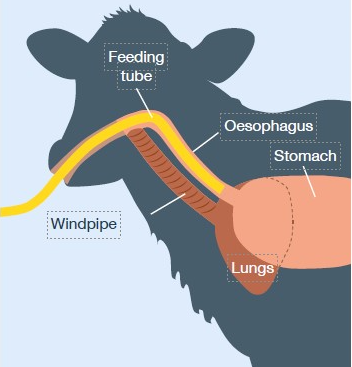Colostrum is a source of maternal antibodies, which aid the calf when fighting off disease or sickness in early life.
Ensuring calves receive adequate amounts of high quality colostrum is important, to ensure that calves remain healthy.
The spring-calving season has started on some farms, while others are days, or even weeks away from the beginning of calving.
When feeding calves colostrum, it is important to remember the 1,2,3 rule.
Using the 1,2,3 rule:
- Use the first milk (colostrum) from the cow;
- Feed the calf colostrum within the first two hours of birth;
- Calves must be offered at least 3L of good-quality colostrum.
Colostrum
One of the best ways to ensure a calf receives adequate colostrum is stomach tubing. The tubing of calves can be difficult if the calf is not correctly positioned.
A easy way of putting the calf in the correct position is as follows: While standing, place their back into a corner, with one hand under the muzzle to keep the head and neck in a natural position.
Remember to work calmly and quietly to minimise stress.
Before the tube is used it should be inspected for damage; if the tube is damaged in any way it should not be used.
Once the tube has been inspected for damage, it should be moistened / softened at the end with warm water.
Slowly pass the tube over the tongue to the back of the mouth, ensuring the tube enters the oesophagus. You should be extremely careful to ensure the tube enters the oesophagus and not the windpipe.
When the tube is in the correct location, the calf should be comfortable and swallowing.
But, before you allow the colostrum to flow through the tube, the placement of the tube should be double checked. This can be checked by feeling the calves neck area.
You should be able to feel the stomach tube – if not, the tube may be in the windpipe.

The windpipe is a hard structure, with rings obvious to touch, while the oesophagus is a soft, collapsable structure.
Remove the tube and reinsert it once again, checking that it is in the correct place. A incorrectly placed tube could be fatal to the calf.
Once you have ensured the tube is correctly placed you can allow the colostrum to flow.
